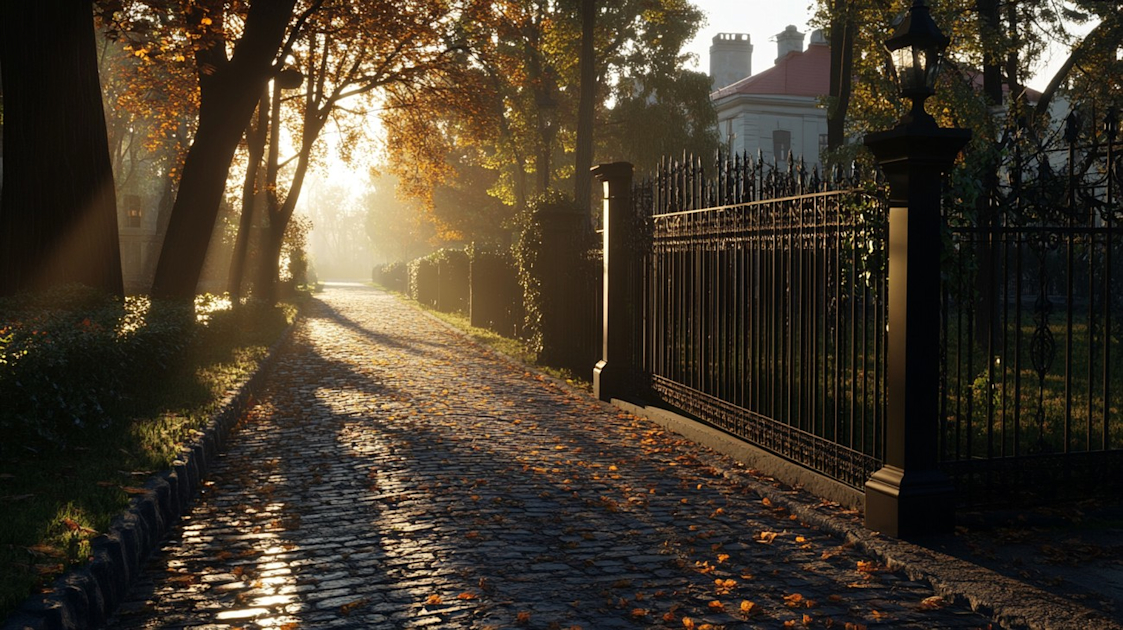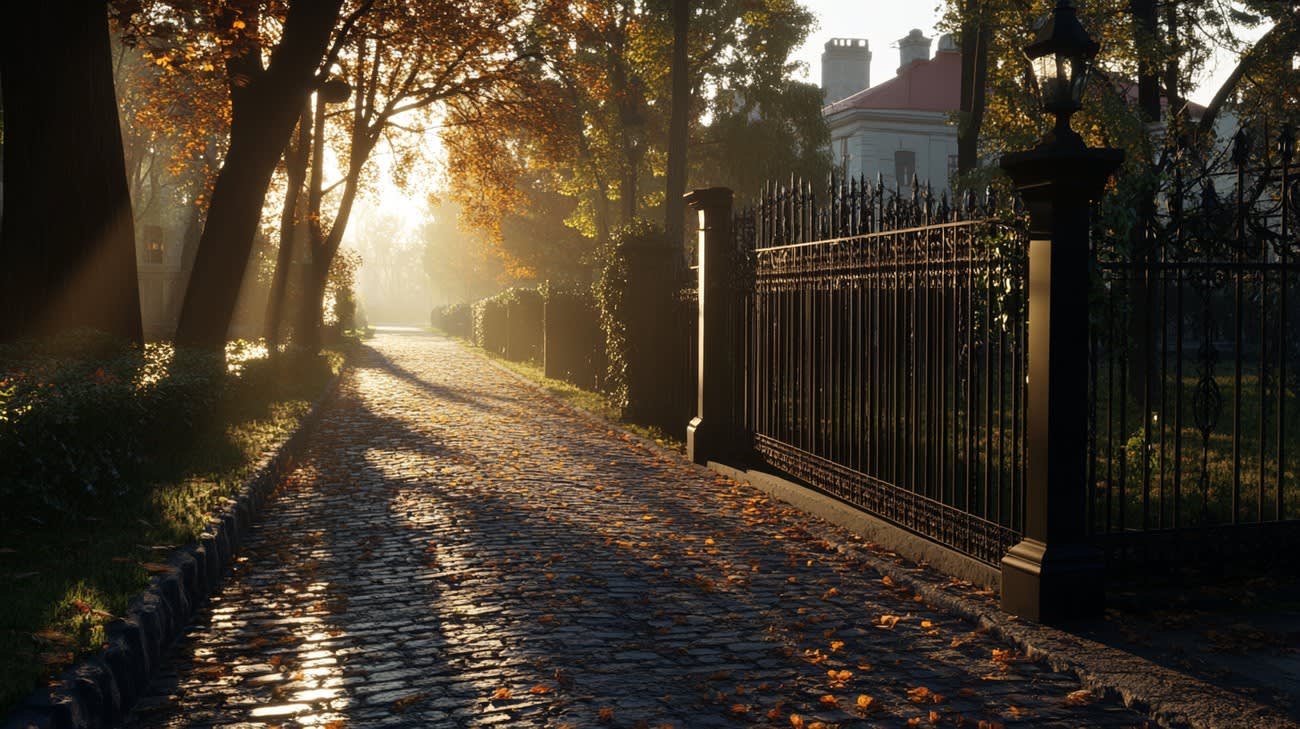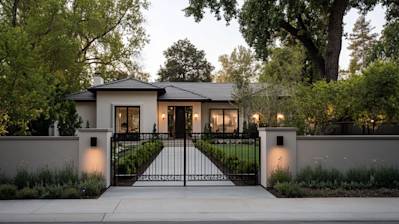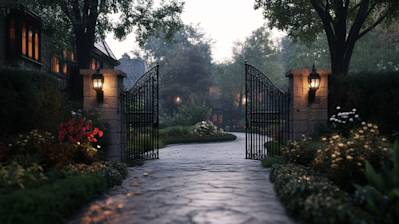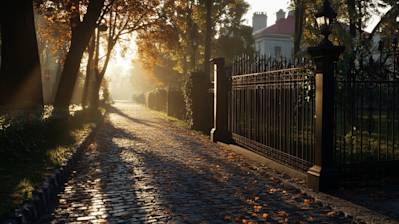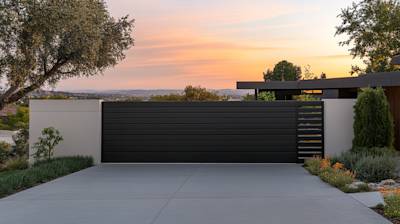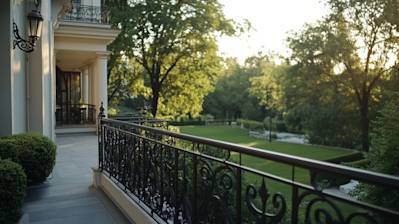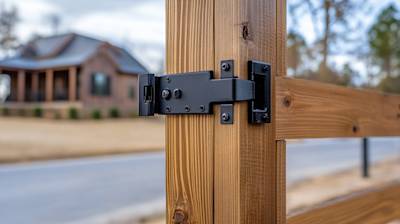Rod iron, popularly known as wrought iron, is a fascinating material that has played a crucial role in various aspects of human development. From stunning Victorian-era masterpieces to ornate garden artistry, the uses of rod iron are as diverse as its history is rich.
Primarily, this article will pull the curtain back on the world of rod iron, shining a spotlight on its characteristics, its broad applications, and how you can maintain it.
Characteristics of Rod Iron
Rod iron is not your everyday type of iron. It possesses several unique qualities that distinguish it from other forms of iron:
- Ductile:* Due to its ductility, rod iron can be heated and bent into various shapes. This property makes it a darling for blacksmiths who revel in creating intricate design details.
- Corrosion-resistant: Despite being an iron product, rod iron is significantly more resistant to corrosion compared to other iron types. This makes it a perfect choice for exterior design elements and fixtures prone to weather elements.
- Iron and Carbon Content: Rod iron primarily comprises iron, with a small percentage of its composition being impurities and slag fibers. Contrary to cast iron, it has less carbon content, which gives it an elemental advantage in terms of strength and durability.
Harnessing the Versatility of Rod Iron Furniture
While the use of rod iron spans various industries, one area where it truly shines is in furniture manufacturing. Rod iron furniture, with its charm and elegance, has a unique ability to transform an ordinary space into an extraordinary one.
Indoor Furniture
One of the areas where rod iron is gaining momentum is in the interior décor setting. With its malleability, rod iron creates artistic and timeless pieces that enhance indoor spaces in the following ways:
- Rod Iron Beds: Promising durability, a rod iron bed could be a one-time buy that serves for a lifetime. It is not only structurally sound but also embodies elegant designs and vintage feelings.
- Rod Iron Tables: These come in two forms — entirely made of rod iron or with rod iron as the table's base. They come in a variety of designs, bringing character into any room.
- Rod Iron Wine Racks: Rod iron wine racks offer an elegant way to store and display wine collections. They are sturdy and can hold a considerable number of wine bottles.
Outdoor Furniture
Rod iron also makes the exterior living spaces stunning. This includes;
- Rod iron Patio Furniture: This outdoor furniture makes a statement on any patio. It’s resilient and can withstand adverse weather conditions.
- Rod Iron Fences and Gates: These are not only durable but also possess an aesthetic appeal that boosts your property's value.
- Garden Accessories and Decor: Rod iron can be molded to create beautiful garden sculptures, bird feeders, birdbaths, trellises, and other decor accessories.
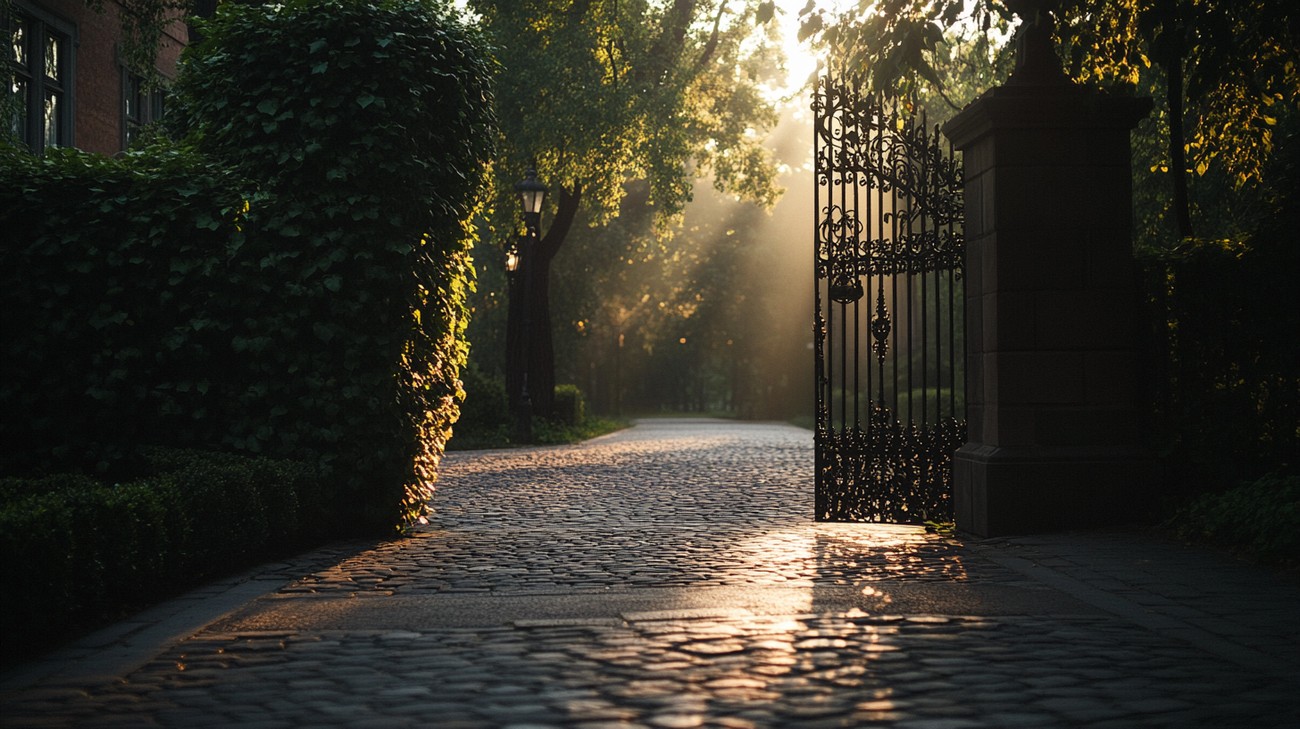
Frequently Asked Questions about Rod Iron
How do I Maintain and Clean Rod Iron?
Cleaning rod iron is relatively straightforward. A soapy water solution and a soft cloth are usually enough to clean rod iron items. For those stubborn spots, you can use a soft wire brush. Maintenance of rod iron requires the application of a protective coat of paint or clear lacquer. This helps prevent rusting. Look out for peeling paint or areas of rust, as these may need more intensive care and possibly re-coating.
What is the Difference Between Rod Iron, Wrought Iron, and Cast Iron?
Though frequently used interchangeably, rod iron, wrought iron, and cast iron are technically distinct materials. Rod iron is pure iron that features a fibrous, grain-like appearance due to its slag inclusions. Wrought iron, on the other hand, is more malleable, less brittle, and has a lower carbon content than rod iron. Lastly, cast iron is iron that contains 2-4% carbon, along with various amounts of silicon and trace amounts of other elements. It is malleable, brittle, and can be easily cast into molds.
Is Rod Iron Still Produced Today?
While rod iron is not produced commercially today, there are still a few craftsmen that forge it manually for replicating historic ironwork or creating decorative objects. As such, rod iron is considered a specialty product, often used in restoration projects or high-end decor.
Is there a Myth Behind the 'Purity' of Rod Iron?
Yes! The concept of rod iron’s purity is often misunderstood. Despite having a low carbon content, rod iron isn't exactly pure iron. The presence of slag inclusions, which comes from the ore from which the iron is made, contributes to its fibrous appearance and gives it greater toughness and durability compared to pure iron.
How can I Tell if It’s Real Rod Iron?
Telling real rod iron apart from other iron types can be tricky without a deep understanding of metals. However, one hint lies in the rusty color that rod iron develops over time due to its porous structure. Additionally, when you look very closely, rod iron has a grain-like structure due to slag inclusions, which is unique to it.
Can I Use Rod Iron for Interior Decor?
Absolutely! Rod iron works wonders in home decor. Its robustness and vintage charm make it perfect for items like beds, lamp stands, curtain rods, or racks. With rod iron, you can add an element of nostalgia, whimsy, and distinctiveness to your interiors.

Pros of Rod Iron
Durability
Strength
One of the primary advantages of rod iron is its immense strength. This material is incredibly sturdy, making it an excellent choice for heavy-duty applications such as construction and fencing. Compared to other materials like aluminum or plastic, rod iron outperforms in strength and longevity.
Long-lasting
Additionally, rod iron is long-lasting. It's not susceptible to rot or pests like wood, or to warping and fading like plastic. This makes it an ideal choice for outdoor furnishings and architectural elements that need to withstand harsh weather conditions.
Aesthetics
Versatility
Rod iron, with its dark, rich color and potential for intricate designs, can add a unique and sophisticated aesthetic to any project. Its versatility in design also makes it suitable for a wide range of architectural and decorative applications, from rustic to modern styles.
Timeless Appeal
The timeless appeal of rod iron adds a sense of history and sophistication to any setting or decor. It's a classic material that complements a wide range of architectural styles, from the traditional to the eclectic.
Maintenance
Low-maintenance
Rod iron requires minimal maintenance. Periodic cleaning with a cloth or brush and soapy water often suffices for maintaining its look and durability.
Easy to Repair
If a rod iron piece becomes damaged or worn, it's easier to repair compared to other materials. It's possible to weld or repaint the iron, while repairing plastic or wood often requires replacement.
Cons of Rod Iron
Cost
Expensive Material
One of the primary disadvantages of rod iron is its cost. This material tends to be more expensive than other common materials like wood or aluminum. This high cost means it might not be the best choice for large-scale projects or for those on a tight budget.
Installation Costs
Additionally, because rod iron is heavy and hard to handle, the installation costs are usually higher than other materials. Professional installation may be required, further increasing the overall project cost.
Weight
Rod iron is a hefty material. Its weight can make it challenging to move and install without professional assistance. It may also not be suitable for structures that can't bear a lot of weight.
Weather Impact
Prone to Rust
Rod iron is prone to rust if it's not well-maintained or treated with a protective coating. Rust not only detracts from its aesthetic value but also impairs its structural integrity.
Heat Conduction
Another weather-related disadvantage of rod iron is that it conducts heat. In hot climates or direct sunlight, rod iron can become too hot to touch. Conversely, in colder temperatures, it can become decidedly chilly.
Limited Flexibility
While rod iron can be wrought into various shapes and designs, it has less flexibility than materials like steel or aluminum. Therefore, creating intricate designs can be more challenging and time-consuming with rod iron.

Myths and Misconceptions about Rod Iron
Misconception: Rod Iron is a Type of Material
A common misconception is that rod iron is a distinct type of material used in construction and decoration. Many people mistakenly believe rod iron is a special type of iron used for fabricating certain goods.
Truth: Rod Iron is a Misnomer
In reality, the term “rod iron” is often misused to refer to “wrought iron”. Wrought iron is an extremely pure form of iron which is often used in outdoor furniture, fences, and other decorative elements. The term “rod iron” is likely a variant that has developed as people misheard or misspelled the word "wrought".
Misconception: Rod Iron is Very Weak
Another misconception about rod iron is that it’s an inherently brittle and weak material. This often stems from people comparing it to modern steels.
Truth: Wrought Iron has Exceptional Durability and Malleability
Although wrought iron is softer and more malleable than carbon steels, it is not weak. In fact, due to its fibrous qualities, wrought iron resists shock and tension very well. In addition, wrought iron is known for its superior corrosion resistance. These factors combined make it a highly desirable material for outdoor applications, where weather resistance is needed.
Misconception: Rod Iron and Cast Iron are the Same Thing
Some people think that rod iron and cast iron are the same thing, or that the terms can be used interchangeably.
Truth: Wrought Iron and Cast Iron are Very Different Materials
While both types of iron are indeed made from iron ore, the process for creating these materials and their end properties are vastly different. Cast iron is made by melting iron ore and adding significant amounts of carbon, resulting in a hard, brittle material.
On the other hand, wrought iron is almost pure iron and is created through a different process where the iron is heated and worked, but not fully melted. This results in a material that is much softer and more malleable than cast iron, which makes it suitable for different applications.
Misconception: Rod Iron is Very Expensive
Another myth that people often believe is that rod iron is very costly material compared to other types of iron or steel.
Truth: Price Depends on the Specific Use and Availability
Wrought iron can indeed be more expensive than ordinary carbon steel, but this is usually due to its greater purity, labor-intensive production process, and its relative scarcity in today’s market.
However, for many applications—particularly decorative ones—the superior working properties and aesthetic qualities of wrought iron make it well worth the extra expense.
Misconception: Rod Iron is Outdated and no Longer in Use
Finally, there's a misconception that rod iron, or more accurately, wrought iron, is outdated and no longer in use.
Truth: Wrought Iron is Valued for its Aesthetic Qualities
While it’s true that the industrial production of wrought iron has largely been replaced by steel, wrought iron is still produced and used for specific applications, particularly where its superior corrosion resistance or its aesthetic qualities are valued.
Moreover, antique wrought iron pieces are highly prized by collectors and can often be found in high-end architectural and garden installations.
Summary
So, there you have it, folks - a bit more information on the subject of rod iron. It turns out this commonly used term is, in most cases, used incorrectly. True rod iron is a material produced from wrought iron, but has become an outdated term as the production of wrought iron itself is almost extinct. That's not to say rod iron doesn’t serve its purpose in our everyday life, it's just become more of an interchangeable term for wrought and cast iron in the modern world.
It's understandable why rod iron has been widely used considering its attractive finish and strong structure. Its application hasn't been limited to just household items - it's used in bridges, fences, and gates too. It's got to be equated with strength and durability because of its inherent qualities after all. But remember, what's often marketed as rod iron is commonly just modern day steel that's been worked to emulate the grain and feel of traditional rod iron.
Finally, it's always best to be informed, especially when it revolves around materials you might put your hard-earned money into. Rod iron, or more accurately, the materials we incorrectly label as rod iron, truly does lend a sense of classic charm and strength to whatever it's applied to. But the next time you find yourself in a conversation about the merits and uses of rod iron, you can impress everyone with your knowledge of the subject - a rare commodity in its own right!
About Ornamental Solutions
Ornamental Solutions is a truly beloved institution nestled in the heart of Rancho Cordova, CA. Our mission? To add a bit more beauty to the world, one project at a time. As a leading provider of ornamental solutions, we bring a unique aesthetic touch to both homes and businesses alike. Our remarkable and close-knit team is equipped with creative expertise and technical skill, propelling us to deliver standout decorative elements that are as unique as they are aesthetically pleasing. From public spaces to private homes, our work can be seen across the city, each one a unique testament to our commitment to quality and beauty. Come to us with an idea, and we'll bring it to life. Now, how can we make your world more beautiful?

